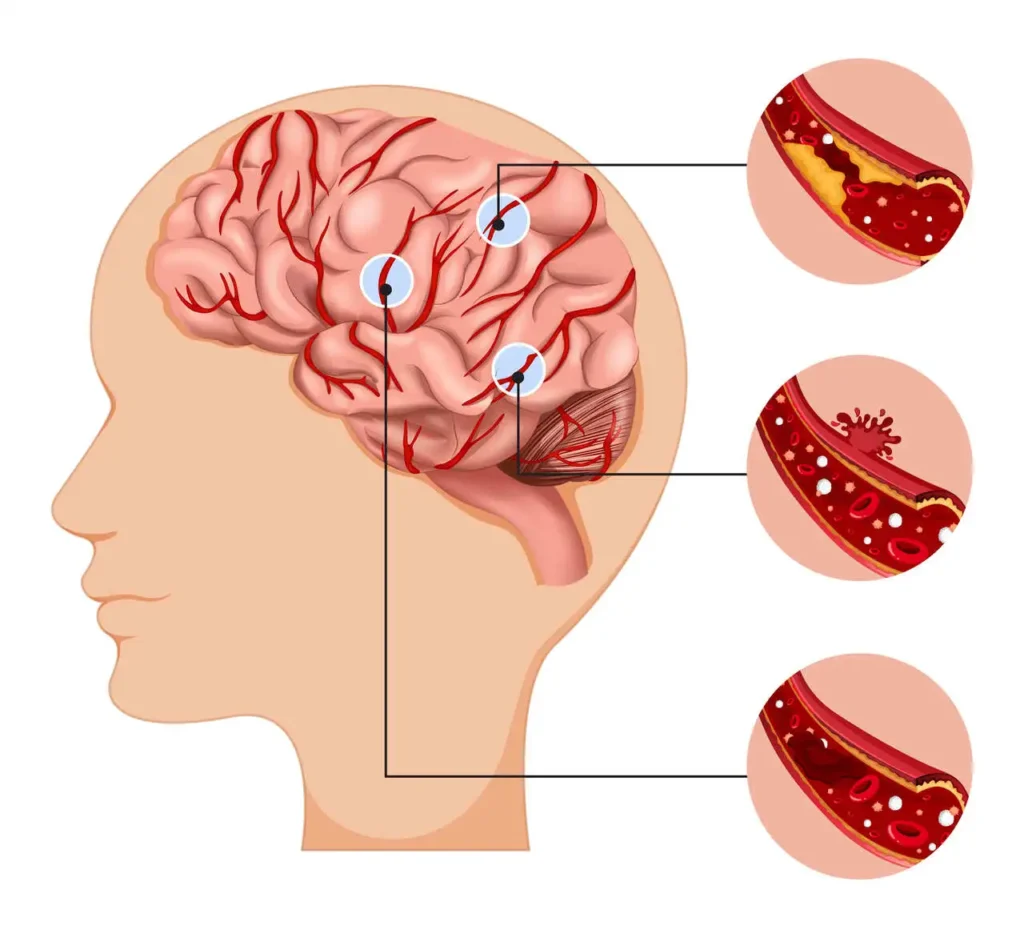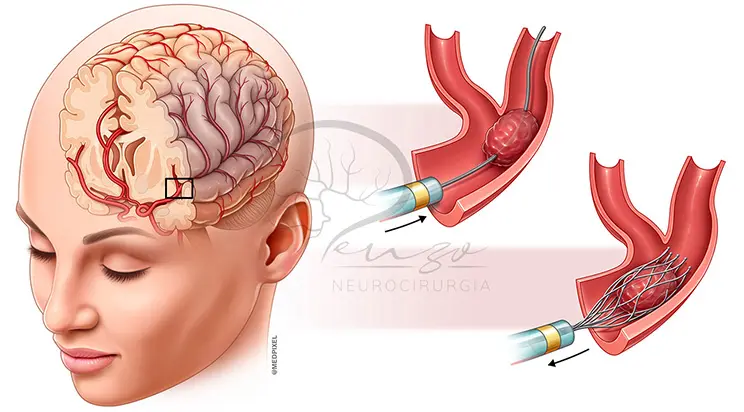Symptoms, Causes, and How to Prevent a Cerebrovascular Accident

What is a Stroke (Cerebrovascular Accident)?
A stroke, or cerebrovascular accident (CVA), is a medical emergency caused by problems in blood flow to the brain. This occurs when blood flow to a part of the brain is blocked, leading to cell death in the affected area.
Stroke is one of the leading causes of death and disability worldwide, yet many people are still unaware of the warning signs, risk factors, and preventive measures. This article will guide you through everything you need to know about stroke to protect your health and that of your loved ones.
Types of Stroke: Understanding the Differences for Better Prevention
There are two main types of stroke: ischemic and hemorrhagic. Both cause significant brain damage, but they have distinct origins.
Ischemic Stroke: The Most Common Type
An ischemic stroke occurs when a blood vessel carrying blood to the brain becomes blocked. This blockage can be caused by a clot forming within an artery (thrombosis) or by a clot that forms elsewhere in the body and travels to the brain (embolism). This type accounts for approximately 87% of all stroke cases.
Hemorrhagic Stroke: When a Blood Vessel Ruptures
Hemorrhagic stroke occurs when a blood vessel in the brain ruptures, causing bleeding and brain damage. Hypertension is a leading cause of this type of stroke, as it weakens the walls of brain arteries over time. Aneurysms or malformations in the brain’s blood vessels also increase the risk.
Stroke Warning Signs: How to Recognize and Respond
It’s crucial to recognize the symptoms of a stroke as quickly as possible. To help with this, use the BEFAST method, which reminds us of the main signs of a stroke:
- B – Balance: Sudden loss of balance or coordination.
- E – Eyes: Blurred or double vision, especially in one eye.
- F – Face: Facial asymmetry. Ask the person to smile and check if one side of the face droops.
- A – Arms: Weakness in one arm. Ask the person to raise both arms and see if one arm drifts down.
- S – Speech: Slurred or confused speech. Ask the person to repeat a simple phrase.
- T – Time: Time is critical. Call emergency services immediately if any of these signs are noticed.
Other Important Stroke Symptoms
In addition to the BEFAST symptoms, other common signs include:
- Numbness on one side of the body;
- Difficulty walking;
- Dizziness;
- Sudden, intense headache;
- Confusion and disorientation.
Recognizing these symptoms early can save lives, and acting quickly is essential to minimizing brain damage.
Stroke Risk Factors: Understand the Primary Causes

Knowing risk factors can help in preventing a stroke. Stroke risk factors can be divided into modifiable and non-modifiable ones.
Non-Modifiable Risk Factors
- Age: The risk increases with age, especially after 55.
- Family History: Having a close relative with a history of stroke increases risk.
- Gender: Men have a slightly higher incidence of stroke, but women have a higher risk of mortality from the event.
Modifiable Risk Factors
Modifiable risk factors are those that can be controlled through lifestyle changes:
- High Blood Pressure: Controlling hypertension significantly reduces stroke risk.
- High Cholesterol: Excess cholesterol can cause plaque in arteries, increasing blockage risk.
- Diabetes: Diabetics are two to three times more likely to have a stroke.
- Smoking: Smoking increases stroke risk by hardening arteries and raising blood pressure.
- Sedentary Lifestyle and Obesity: Excess weight and lack of physical activity increase blood pressure and cholesterol levels.
Stroke Prevention: How to Reduce Risk?
Preventing stroke involves adopting a healthy lifestyle and, in some cases, undergoing regular medical checkups. These are the primary steps to take to reduce risk.
Tips for a Healthy Lifestyle
- Healthy Diet: Reduce saturated fats, salt, and sugar. Focus on fruits, vegetables, whole grains, and lean proteins.
- Regular Physical Activity: Regular exercise helps maintain a healthy weight and control blood pressure.
- Avoid Excessive Alcohol Consumption: Too much alcohol can raise blood pressure.
- Quit Smoking: Quitting smoking significantly reduces cardiovascular disease risk.
Regular Medical Check-Ups
Track your health with regular exams to monitor blood pressure, cholesterol, and glucose levels. Annual check-ups are essential for preventing and early detection of conditions that increase stroke risk.
Stroke Consequences: Life After a Stroke
The consequences of a stroke vary depending on the brain area affected and the severity of the damage. Some people recover almost fully, while others face permanent disabilities. Common consequences include:
- Paralysis or Muscle Weakness: Often on one side of the body;
- Speech and Communication Issues: Such as aphasia (difficulty speaking or understanding language);
- Memory and Cognitive Function Loss: Reduced ability to think or remember;
- Emotional Problems: Depression and anxiety are common after a stroke.
Rehabilitation, including physical therapy, occupational therapy, and speech therapy, is essential to maximizing recovery.
What to Do in Case of a Stroke: Essential Steps
When a stroke occurs, every second counts in minimizing brain damage. The best action is to seek medical assistance immediately. If you witness someone showing stroke symptoms:
- Call emergency services and describe the symptoms to the operator;
- Stay calm and support the person, making them as comfortable as possible;
- Do not offer food or drinks, as the stroke may impair swallowing;
- Wait for assistance and provide important medical information about the person affected.

Conclusion – Protect Yourself from Stroke: Knowledge and Prevention are Key!
Stroke is a serious condition, but often preventable. By understanding the symptoms, risk factors, and prevention strategies, you are one step closer to protecting your health and that of your loved ones. Adopting a healthy lifestyle and staying alert to stroke signs can make a huge difference.
Take care of your health and stay aware of the signs – together, we can reduce stroke numbers.
Stroke Cerebrovascular accidentHeart-Healthy Cardio Workouts to Strengthen Your Cardiovascular Systemhttps://youtu.be/E_3LSi8QOKA?si=8BM8xKy54SrMD31Y



